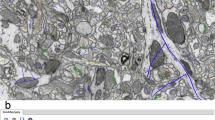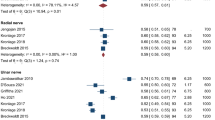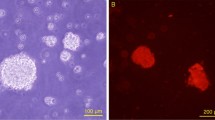Abstract
NERVE fibres have become greatly elongated for their function of conduction, but each yet remains essentially a bag, surrounded by a membrane, with the nucleus separated in a special region, the nerve cell body, at one end. It is difficult to obtain a true representation of the immense disproportion between the length and breadth of these cells. The cell body of a mammalian motor fibre is an irregular star-shaped structure about 1/10 mm. in diameter. Attached to this is the axon process which is 1/50 mm. in diameter or less, and yet often as much as 1 metre in length. Even in the very shortest peripheral nerve fibres, the axon is 1,000 times as long as it is broad. In very many motor fibres in man the disproportion is 10,000 times. But some of the longest sensory fibres, more than 1 metre in length, are less than a tenth of the thickness of these motor fibres and the disproportion here must often approach one million times.
This is a preview of subscription content, access via your institution
Access options
Subscribe to this journal
Receive 51 print issues and online access
$199.00 per year
only $3.90 per issue
Buy this article
- Purchase on SpringerLink
- Instant access to full article PDF
Prices may be subject to local taxes which are calculated during checkout
Similar content being viewed by others
References
Weiss, P., Biol. Butt., 87, 160 (1944).
Steinbach, H. B., and Spiegelman, S., J. Cell, and Comp. Physiol., 22, 187 (1943).
Cowan, S. L., Proc. Roy. Soc., B, 115, 216 (1934).
Curtis, H. J., and Cole, K. S., J. Cell, and Comp. Physiol., 19, 135 (1942).
Shanes, A. M., J. Cell, and Comp. Physiol., 23, 193 (1944).
Hodgkin, A. L., and Huxley, A. F., Nature, 144, 710 (1939).
Curtis, H. J., and Cole, K. S., J. Cell. and Comp. Physiol., 15, 147 (1940).
Katz, B., "Electric Excitation of Nerve" (Oxford Univ. Press, 1939).
Hodgkin, A. L., J. Physiol., 90, 183 (1937).
Offner, F., Weinberg, A., and Young, G., Bull. Math. Biophys., 2, 89(1940).
Pumphrey, R. J., and Young, J. Z., J. Exp. Biol., 15, 453 (1938).
Dale, H. H., Feldberg, W., and Vogt, M., J. Physiol., 86, 353 (1936).
Weiss, P., Arch. Surg., 46, 525 (1943).
Sanders, F. K., and Young, J. Z., Nature, 155, 237 (1945).
Rights and permissions
About this article
Cite this article
YOUNG, J. Structure, Degeneration and Repair of Nerve Fibres*. Nature 156, 132–136 (1945). https://doi.org/10.1038/156132a0
Issue date:
DOI: https://doi.org/10.1038/156132a0
This article is cited by
-
Ultrastructural pathology of the peripheral nervous system
Zeitschrift f�r Neurologie (1973)
-
Electron microscopic study on Wallerian degeneration of the peripheral nerve
Zeitschrift f�r Zellforschung und Mikroskopische Anatomie (1961)
-
Struktur und Funktion peripherer Warmblüter-nervenfasern im Frühstadium der Wallerschen Degeneration
Zeitschrift für Zellforschung und Mikroskopische Anatomie (1960)



